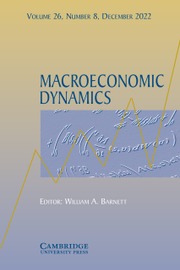No CrossRef data available.
Article contents
Mergers and acquisitions and the aggregate markup
Published online by Cambridge University Press: 24 June 2025
Abstract
The measured markups in the U.S. have been increasing since the 1980s. This paper quantitatively evaluates the impact of surging mergers and acquisitions (M&As) on the aggregate markup. We propose a dynamic general equilibrium model featuring heterogeneous firms, endogenous markups, and an M&A market to explore the aggregate implications of M&As under different antitrust policy regimes. Firms are heterogeneous in productivity, while more productive firms are larger in size and charge a higher markup, and the M&A market is characterized by a search and matching process. Successful purchases of other firms improve the productivity of the acquirer but also raise its markup. We calibrate the impact of M&As on markups at the firm level to the data counterpart. Our quantitative results show that surging M&As account for about 60% of the 9.75 percentage points increase in aggregate markup in the U.S. from the 1980s to the 2010s. The quantified model also generates changes in the markup distribution comparable to the data.
Information
- Type
- Articles
- Information
- Copyright
- © The Author(s), 2025. Published by Cambridge University Press

